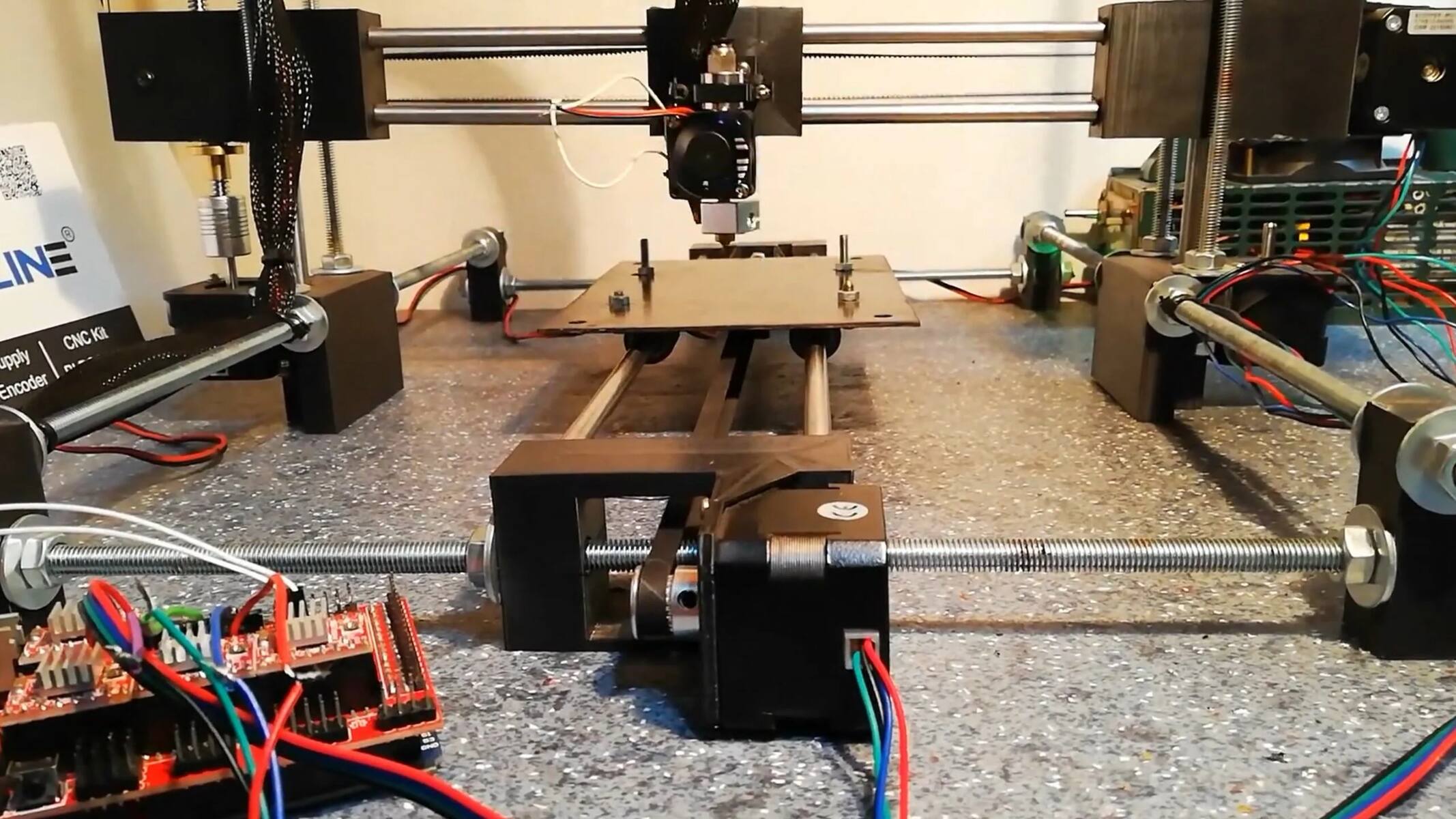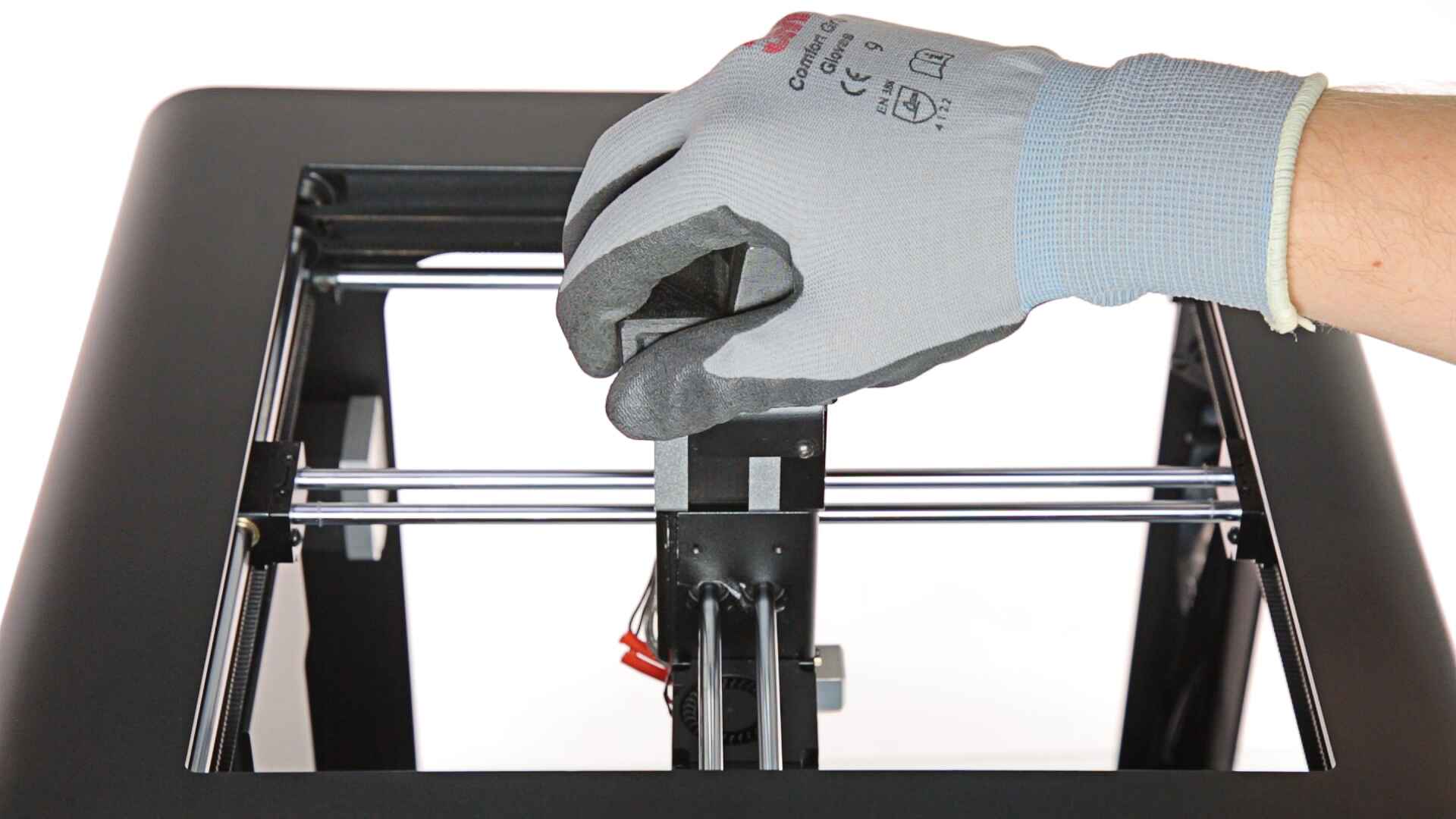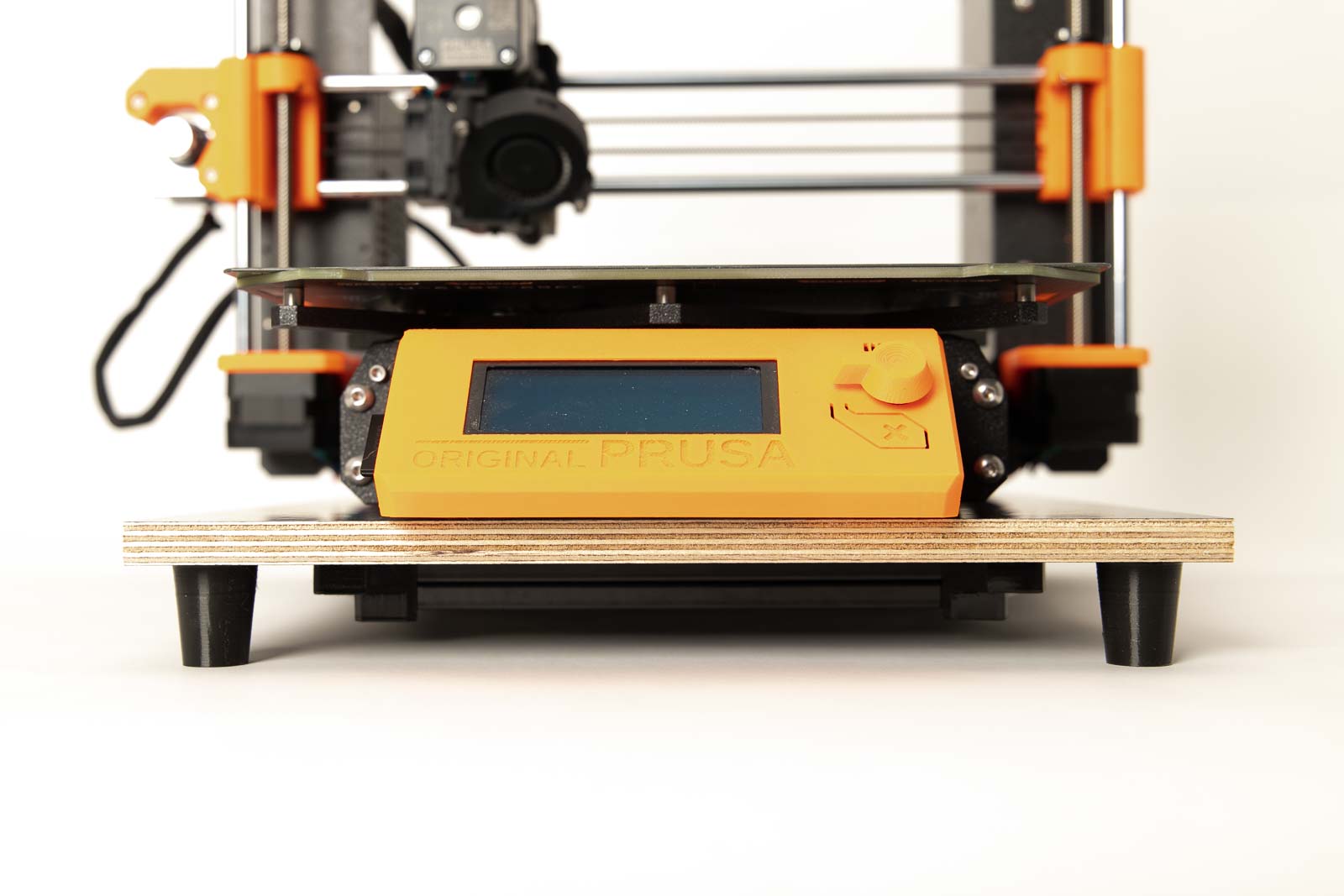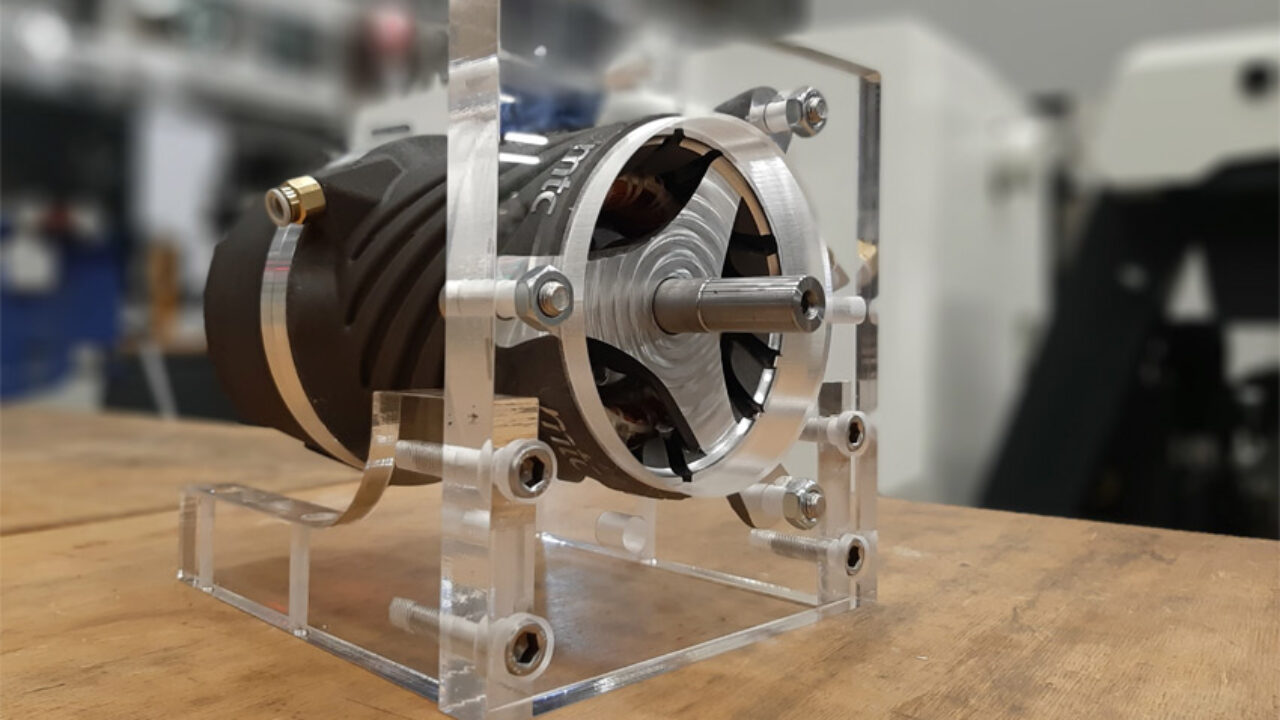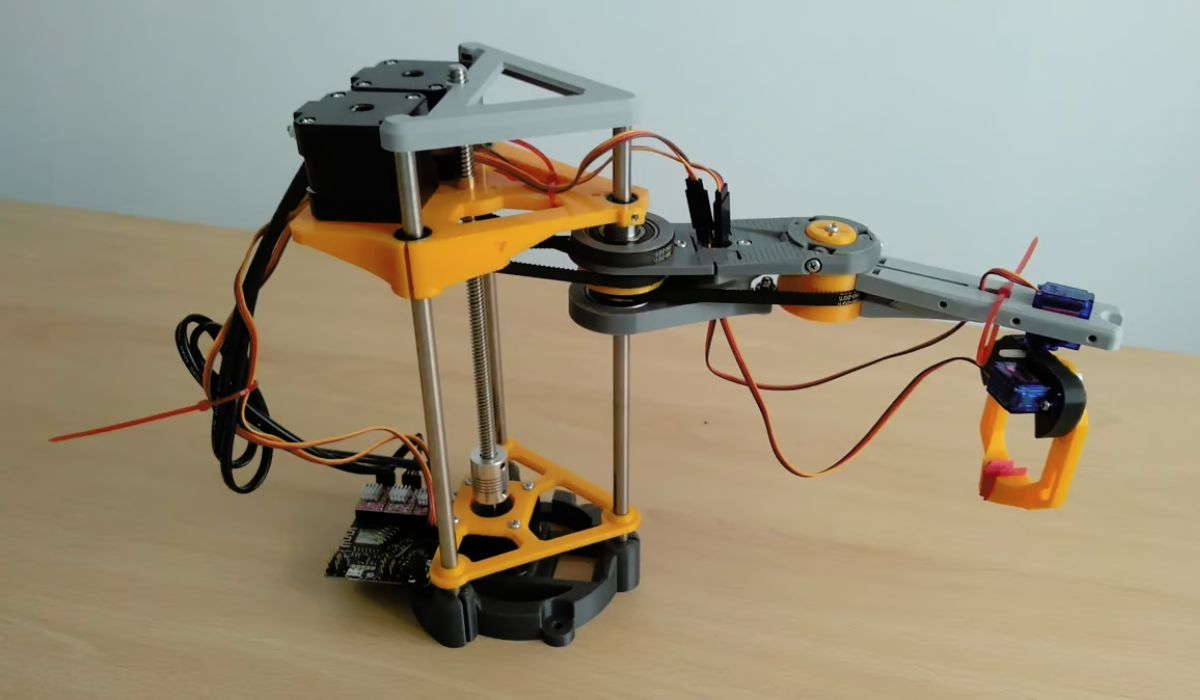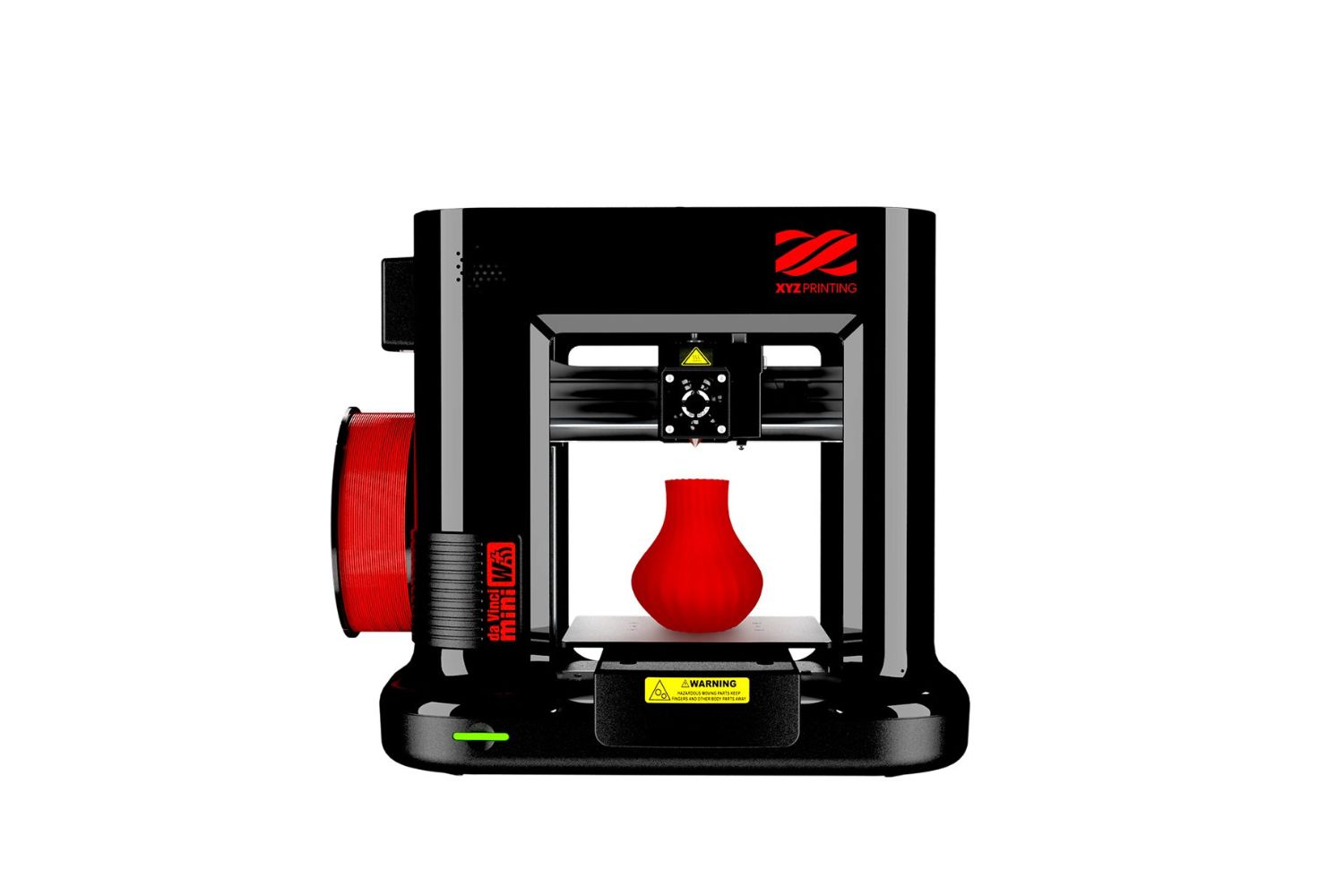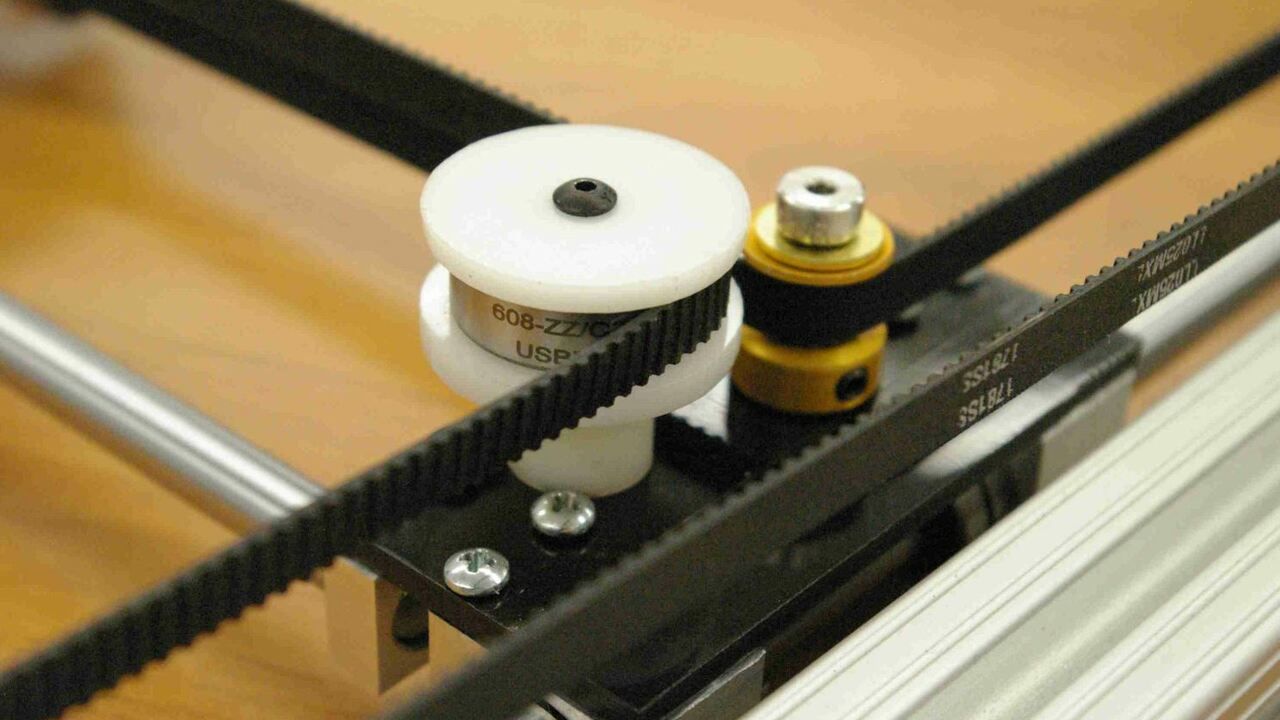Introduction
Welcome to the world of 3D printing, where intricate designs and precise details come to life. One of the key components that make this incredible technology possible is the use of steppers, or stepper motors. These small but mighty motors are responsible for controlling the movement of the printer’s various components, allowing for precise and accurate positioning.
In this article, we will take a closer look at what exactly steppers are, how they work, and their importance in the 3D printing process. Whether you are a beginner just starting out with 3D printing or a seasoned enthusiast looking to expand your knowledge, understanding the role of steppers is essential to achieving high-quality prints.
Steppers are found in almost every 3D printer, acting as the driving force behind the movement of the print head, extruder, and build plate. They operate by converting electrical signals into precise mechanical movements, allowing for controlled motion along multiple axes. This level of control is crucial for achieving the intricate and complex designs that 3D printing is known for.
There are several different types of stepper motors commonly used in 3D printers, each with its own unique characteristics and advantages. We will explore these variations in more detail later in the article, but for now, it’s important to note that they all share a common goal: accurate and repeatable movement.
While other types of motors, such as servo motors or DC motors, can also be used in 3D printers, steppers are the most popular choice due to their affordability, precision, and ease of control. Steppers offer distinct advantages, such as precise positioning without the need for additional feedback sensors, making them well-suited for the tight tolerances required in 3D printing.
The importance of steppers in the 3D printing process cannot be overstated. They are responsible for controlling the speed, direction, and position of the print head and extruder, ensuring that each layer of filament is precisely deposited to create the desired shape. Without accurate and reliable stepper motors, achieving smooth and high-quality prints would be nearly impossible.
To ensure optimal performance, it is important to properly configure and calibrate the steppers in your 3D printer. This involves setting the appropriate step resolutions, adjusting the current limits, and fine-tuning the motor parameters to match your specific printer and filament requirements. It may seem daunting at first, but with some research and experimentation, you can optimize your steppers for optimal performance.
In the next sections, we will delve deeper into how steppers work, the different types commonly used in 3D printers, and how to troubleshoot common stepper motor issues. By the end of this article, you will have a comprehensive understanding of the role steppers play in 3D printing and be equipped with the knowledge to tackle any related challenges that may arise.
What are steppers on a 3D printer?
Steppers, short for stepper motors, are a crucial component of 3D printers. These motors are responsible for controlling and precisely moving the various parts of the printer, such as the print head, extruder, and build plate, in order to produce intricate 3D prints with accuracy.
Unlike conventional motors that typically spin continuously, steppers work by dividing a full rotation into discrete steps. Each step corresponds to a fixed angular movement, allowing for precise control over the motor’s position. By sequentially energizing different sets of coils, the magnetic field generated in the motor’s stator causes the rotor to rotate in precise increments.
Steppers are designed with a certain number of steps per rotation, referred to as the step resolution. Common step resolutions for 3D printers range from 200 to 400 steps per revolution, providing the granularity needed for precise movements.
One of the key advantages of stepper motors is their ability to hold their position firmly when no external force is applied. This holding torque ensures that the motor remains stable and doesn’t drift even when the printer is stationary, which is essential for the accuracy required in 3D printing.
Steppers are typically driven by a motor controller, which provides the necessary electrical signals to control the motor’s movement. These signals determine the step direction, step size, and speed at which the motor rotates.
In most 3D printers, multiple steppers are used to control different axes of movement. For example, a Cartesian-style 3D printer commonly uses two steppers for the X and Y-axis movement, and an additional stepper for the Z-axis. Some printers may also incorporate steppers for other functions, such as filament feeding or layer cooling.
Overall, steppers are the workhorses of a 3D printer, enabling precise and controlled movements that are essential for successful 3D printing. Without these motors, the printer would be unable to accurately position the print head and extruder, resulting in misaligned layers and poor print quality.
In the next section, we will dive further into the working principles of stepper motors, exploring how they convert electrical signals into mechanical motion and the different types commonly used in 3D printers.
How do steppers work?
Stepper motors, also known as steppers, are unique in how they operate compared to other types of motors. They work by converting electrical signals into precise mechanical movements through a process called magnetism.
Steppers are composed of two main components: a rotor and a stator. The rotor contains a permanent magnet, while the stator surrounds the rotor and consists of multiple sets of electromagnetic coils. These coils are arranged in a specific pattern, known as phases, and are energized in a sequence to produce movement.
When electrical current is applied to the coils, a magnetic field is generated. The interaction between the magnetic field of the stator and the permanent magnet of the rotor causes the rotor to align itself with the magnetic field of the stator. This alignment is what produces the precise mechanical movement.
Steppers are designed to have a certain number of steps per revolution, which determines the angular resolution of the motor. This step resolution is determined by the number of coil phases and the physical construction of the motor.
The most common type of stepper motor used in 3D printers is the bipolar stepper. In a bipolar stepper, each coil phase has two wires, allowing the current to flow in either direction, hence the “bi” in bipolar. By controlling the direction and sequence of current flow in the coils, the rotation of the motor can be precisely controlled.
Stepper motors are typically driven by a motor controller that provides the necessary electrical signals to control the motor’s movement. The controller sends a sequence of electrical pulses to the coils, energizing them in a specific pattern. By controlling the timing and sequence of these pulses, the motor can be rotated in discrete increments.
Unlike other types of motors, such as DC motors, steppers do not rely on feedback to determine their position. Instead, the motor controller keeps track of the number of steps sent to the motor and assumes that each step corresponds to a certain angular movement. This open-loop control system is sufficient for most 3D printing applications, as the accuracy of steppers allows for precise positioning without the need for additional sensors.
In summary, stepper motors operate using the principles of magnetism, with the interaction between the rotor and stator producing controlled mechanical movement. By energizing the coils in a specific sequence, steppers can be accurately controlled to perform precise movements along different axes. This precise control is critical in 3D printing to achieve detailed and accurate prints.
Types of steppers commonly used in 3D printers
There are several types of stepper motors commonly used in 3D printers, each with its own characteristics and advantages. The choice of stepper motor depends on factors such as the specific application, cost, and desired performance.
1. Bipolar Stepper Motors:
This is the most common type of stepper motor used in 3D printers. Bipolar steppers have two coils per phase, with each coil having a pair of wires. The flow of electrical current can be reversed in each coil, allowing for precise control of the motor’s movement. Bipolar steppers are known for their high torque and accuracy, making them suitable for a wide range of 3D printing applications.
2. Unipolar Stepper Motors:
Unipolar steppers have multiple coils per phase, with each coil having a center tap. These motors are simpler to wire and control compared to bipolar steppers. However, unipolar steppers typically have lower torque and are less precise compared to bipolar steppers, making them more suitable for lighter load applications or budget-friendly 3D printers.
3. Hybrid Stepper Motors:
Hybrid steppers combine elements of both bipolar and unipolar steppers, offering the best of both worlds. They have multiple coils like unipolar steppers, but also allow for the reversal of current flow in each coil like bipolar steppers. This results in increased torque and improved precision compared to unipolar steppers. Hybrid steppers are often preferred for applications that require higher performance and greater flexibility.
4. Geared Stepper Motors:
Geared steppers have a gearbox attached to the motor shaft, which reduces the rotational speed but increases the torque output. This can be beneficial when higher torque is required, such as in applications where the printer needs to move heavier components or apply more force. Geared steppers can provide improved precision due to the higher torque output, but they may also introduce more mechanical complexity and backlash.
5. NEMA Stepper Motors:
NEMA (National Electrical Manufacturers Association) stepper motors are a standardized size classification. These motors come in various frame sizes, such as NEMA 17 or NEMA 23, which relate to their physical dimensions. NEMA stepper motors are widely used in 3D printers due to their availability, compatibility, and ease of integration.
It’s important to note that the choice of stepper motor type may also depend on the specific printer design and manufacturer recommendations. Understanding the characteristics and capabilities of different stepper motors can help you make informed choices when it comes to upgrading or replacing components in your 3D printer.
Now that we have explored the types of stepper motors commonly used in 3D printers, let’s move on to the next section where we will compare steppers with other types of motors to understand their advantages in the 3D printing process.
Stepper motors vs. other motors
When it comes to 3D printing, stepper motors are the preferred choice over other types of motors due to their unique characteristics and advantages. Let’s compare stepper motors with other commonly used motors in the context of 3D printers.
1. Stepper Motors vs. Servo Motors:
Servo motors are known for their precise control and feedback capabilities. Unlike stepper motors, servo motors use a closed-loop control system that continuously monitors and adjusts the position of the motor. While servo motors offer high precision and can handle varying loads, they can be more expensive and complex to implement. The use of additional sensors and feedback mechanisms adds complexity to the system. Stepper motors, on the other hand, provide sufficient precision for most 3D printing applications without the need for additional sensors, making them a cost-effective choice.
2. Stepper Motors vs. DC Motors:
DC motors are commonly found in many consumer electronics and hobbyist projects. They are relatively simple and cost-effective. However, DC motors lack the precision and control offered by stepper motors. DC motors typically require additional feedback mechanisms, such as encoders, to accurately control their position. Stepper motors, on the other hand, can achieve precise positioning without the need for external feedback, making them more suitable for the precise movements required in 3D printing.
3. Stepper Motors vs. AC Motors:
AC motors are widely used in industrial applications due to their high power output and efficiency. However, AC motors are typically not well-suited for the precise positioning required in 3D printers. AC motors require complex control systems to achieve accurate position control. Stepper motors, with their discrete steps and precise control, offer a more straightforward and cost-effective solution for the precise movements needed in 3D printing.
In summary, stepper motors offer several advantages over other types of motors in the context of 3D printing. They provide precise positioning without the need for additional sensors or feedback mechanisms, making them cost-effective and easy to integrate. Stepper motors strike a balance between affordability, precision, and ease of control, making them the preferred choice for accurate and controlled movements in 3D printers.
Now that we understand the advantages of stepper motors in 3D printing, let’s explore their importance in the overall printing process in the next section.
Importance of steppers in 3D printing
Stepper motors play a crucial role in the 3D printing process, ensuring that precise and accurate movements are achieved throughout the printing process. Here are several key reasons why steppers are essential in 3D printing:
1. Accurate Positioning:
Stepper motors provide precise positioning control, allowing the print head, extruder, and build plate to move with accuracy. This is vital in 3D printing, as it ensures that each layer of filament is deposited in the correct location, resulting in properly aligned and detailed prints.
2. Repeatable Movements:
Steppers offer reliable and repeatable movements, ensuring consistent results in each print. The ability to accurately reproduce the same movements and positions is crucial for achieving consistent layer adhesion, reducing errors, and maintaining print quality.
3. Tolerance Control:
Stepper motors allow for tight tolerance control, ensuring that the printer can achieve the precise dimensions and shapes of the intended design. This level of precision is essential for intricate models and functional parts where accuracy is critical.
4. Ease of Calibration:
Stepper motors are relatively easy to calibrate, allowing users to fine-tune the motor parameters and step resolutions to match the specific printer and filament requirements. This calibration process optimizes the printer’s performance, ensuring better print quality and reducing the risk of issues such as layer shifting or misalignment.
5. Cost-Effectiveness:
Compared to other types of motors, stepper motors are cost-effective while still providing sufficient precision and control for 3D printing. Steppers offer a balance between affordability and performance, making them a popular choice among 3D printer manufacturers and enthusiasts.
6. Integration with Control Systems:
Stepper motors can be easily integrated into the control systems of 3D printers. The discrete steps and predictable movements of steppers make them compatible with a wide range of software and firmware, allowing for seamless control and integration into the printing process.
Without accurate and reliable stepper motors, achieving high-quality 3D prints with intricate details and precise dimensions would be challenging. Steppers ensure that the printer can accurately move and position the print head, extruder, and build plate, resulting in consistent and visually appealing prints.
Now that we understand the importance of steppers in 3D printing, let’s move on to the next section, where we will explore the process of configuring and calibrating steppers to optimize their performance.
Configuring and calibrating steppers
Configuring and calibrating the stepper motors in your 3D printer is an essential step to ensure optimal performance and print quality. By fine-tuning the settings, you can make precise adjustments to match your specific printer and filament requirements. Here are the key steps involved in configuring and calibrating your steppers:
1. Step Resolutions:
Step resolution refers to the number of steps required for the motor to complete one revolution. This setting determines the level of precision and smoothness in the motor’s movement. Most 3D printers default to a step resolution of 16 or 32 microsteps per full step. Experimenting with different step resolutions can help you find the optimal balance between precision and speed for your prints.
2. Current Limits:
Each stepper motor has a maximum current rating, which should not be exceeded to prevent overheating or damage. The motor driver or stepper driver board allows you to adjust the current limit to match the motor’s specifications. Finding the appropriate current limit ensures proper motor function and extends the lifespan of the stepper motor.
3. Motor Parameters:
Controlling the motor parameters, such as acceleration and maximum speed, is crucial for achieving smooth and accurate movements. These settings are typically adjusted in the firmware or software controlling your printer. Balancing acceleration for faster prints while maintaining precise movements is key to achieving the desired print quality without sacrificing speed.
4. Mechanical Considerations:
In addition to electronic settings, mechanical considerations should also be taken into account. This includes ensuring proper belt tension, reducing mechanical friction, and checking for any loose or misaligned components. Mechanical issues can impact the performance of the stepper motors, so regular maintenance and attention to these details are important.
5. Test Prints and Iteration:
After making initial adjustments to your stepper motor settings, it is recommended to perform test prints to assess the print quality and make further refinements if necessary. It may take several iterations of tweaking the settings to achieve the desired results. Pay close attention to factors such as dimensional accuracy, layer adhesion, and overall print quality during the test prints.
It’s crucial to document any changes made to the stepper motor settings, as well as any corresponding improvements or issues observed during the print process. This documentation will help you replicate successful configurations and troubleshoot any future issues that may arise.
Remember, the configuring and calibrating process can differ depending on the type of printer, firmware, and motor drivers used. It’s important to consult the manufacturer’s guidelines, online resources, and forums specific to your printer model for detailed instructions and tips.
In the next section, we will discuss common issues related to stepper motors and how to troubleshoot them to ensure smooth printing experiences.
Troubleshooting common stepper motor issues
While stepper motors are reliable and precise, they can encounter certain issues that can affect their performance in the 3D printing process. Here are some common stepper motor issues and troubleshooting steps to address them:
1. Skipping Steps:
If your stepper motor is skipping steps, resulting in inaccuracies in your prints, there are a few potential causes to investigate. First, check the motor current settings to ensure they are adequate for your specific setup. Insufficient current can cause the motor to lose steps. Additionally, check for any mechanical issues, such as loose belts or misaligned pulleys. Proper tensioning of belts and ensuring proper alignment can help prevent skipping steps.
2. Motor Overheating:
If your stepper motor is overheating, it may indicate that the current limit is set too high or that the motor is being pushed beyond its capabilities. Review the motor specifications and adjust the current limit accordingly. Also, check for any obstructions that may be increasing the motor’s workload, such as excessive friction or misaligned parts. Proper lubrication and mechanical alignment can help prevent overheating.
3. Noisy Operation:
If your stepper motor is making unusual or excessive noise during operation, it could be a sign of mechanical issues. Check for any loose screws or components, as well as improper alignment of parts. These can cause vibrations and lead to noisy motor operation. Additionally, make sure that the motor and its mount are secure and free from any excessive movement that could contribute to noise.
4. Inconsistent Movement:
If your stepper motor exhibits inconsistent movement or jerky motion during printing, it may be due to inadequate motor control settings. Adjust the acceleration and maximum speed settings in your printer’s firmware to find the optimal values that allow for smooth and consistent movement. Additionally, check for any binding or mechanical obstructions in the printer’s motion system that could be causing the inconsistent movement.
5. Lack of Power or Torque:
If your stepper motor seems to lack sufficient power or torque to move the desired components, consider adjusting the current limit to provide more power to the motor. However, be mindful not to exceed the motor’s maximum current rating. Additionally, ensure that the load on the motor is within its capabilities and that there are no mechanical obstructions that impede movement.
Remember to approach troubleshooting systematically by eliminating one potential cause at a time. Document any changes made and their impact on the stepper motor’s performance. Utilize online resources, forums, and manufacturer support to seek guidance and solutions for specific issues related to your printer model and stepper motor.
In the next section, we will conclude our exploration of the role of stepper motors in 3D printing and summarize the key takeaways.
Conclusion
Stepper motors are an integral component of 3D printers, playing a vital role in the precise movement and positioning required for accurate and high-quality prints. With their ability to convert electrical signals into small, incremental steps, steppers offer the precision and control necessary for intricate designs and complex geometries.
In this article, we explored what steppers are and how they work, including the different types commonly used in 3D printers. We also compared stepper motors to other types of motors, highlighting the advantages that make them the preferred choice for 3D printing applications.
Understanding the importance of steppers in the 3D printing process is crucial. Steppers provide accurate positioning, repeatable movements, and control over tolerances, ensuring that each layer of filament is deposited with precision. Their affordability and ease of integration make them a cost-effective solution for achieving quality prints.
Configuring and calibrating steppers is an essential step in optimizing their performance. By adjusting settings such as step resolution, current limits, and motor parameters, users can fine-tune their steppers to match their specific printer and filament requirements, leading to improved print quality.
Lastly, we discussed common stepper motor issues and provided troubleshooting steps to address them. By addressing issues such as skipping steps, motor overheating, noise, inconsistent movement, and lack of power, users can ensure smooth and reliable 3D printing experiences.
Remember, each 3D printer may have its own unique characteristics and requirements, so it’s important to consult the manufacturer’s guidelines and seek support from the 3D printing community when troubleshooting and optimizing stepper motor performance.
With a solid understanding of steppers and how they contribute to the 3D printing process, you are now equipped to further explore and experiment with this exciting technology. Embrace the possibilities and continue to refine your printing techniques as you embark on your journey in the world of 3D printing.







